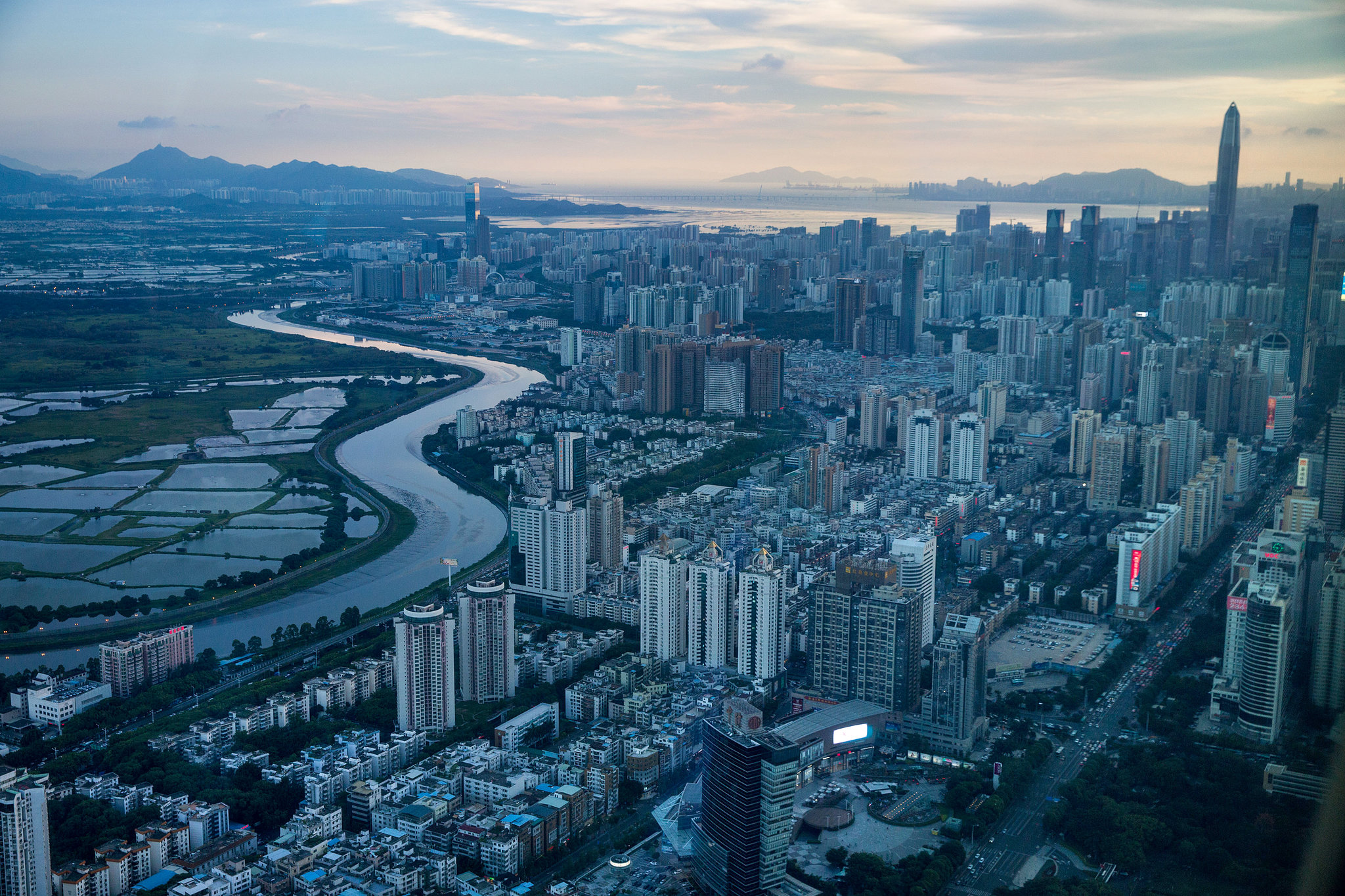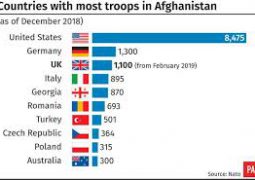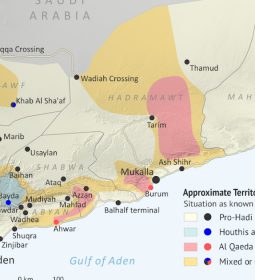Rising Waters Threaten China’s Rising Cities

GUANGZHOU, China — The rains brought torrents, pouring into basements and malls, the water swiftly rising a foot and a half.
Changing Climate, Changing Cities
How climate change is challenging the world’s urban centers.
The city of Dongguan, a manufacturing center here in the world’s most dynamic industrial region, was hit especially hard by the downpour in May 2014. More than 100 factories and shops were inundated. Water climbed knee-high in 20 minutes, wiping out inventory for dozens of businesses.
Next door in Guangzhou, an ancient, mammoth port city of 13 million, helicopters and a fleet of 80 boats had to be sent to rescue trapped residents. Tens of thousands lost their homes, and 53 square miles of nearby farmland were ruined. The cost of repairs topped $100 million.
Chen Rongbo, who lived in the city, saw the flood coming. He tried to scramble to safety on the second floor of his house, carrying his 6-year-old granddaughter. He slipped. The flood swept both of them away.
Flooding has been a plague for centuries in southern China’s Pearl River Delta. So even the rains that May, the worst in the area in years, soon drifted from the headlines. People complained and made jokes on social media about wading through streets that had become canals and riding on half-submerged buses through lakes that used to be streets. But there was no official hand-wringing about what caused the floods or how climate change might bring more extreme storms and make the problems worse.
A generation ago, this was mostly farmland. Three vital rivers leading to the South China Sea, along with a spider’s web of crisscrossing tributaries, made the low-lying delta a fertile plain, famous for rice. Guangzhou, formerly Canton, had more than a million people, but by the 1980s, China set out to transform the whole region, capitalizing on its proximity to water, the energy of its people, and the money and port infrastructure of neighboring Hong Kong.
While it is difficult to attribute any single storm or heat wave to climate change, researchers say there is abundant evidence that the effects of climate change can already be seen — in higher water levels, increasing temperatures and ever-more severe storms.
And climate change not only poses a menace to those who live and work here, or to the immense concentration of wealth and investment. It is also a threat to a world that has grown dependent on everything produced in the area’s factories.
The rising South China Sea and the overstressed Pearl River network lie just a meter or so below much of this new multitrillion-dollar development — and they are poised to drown decades of progress, scrambling global supply chains and raising prices on a world of goods like smartphones, T-shirts, biopharmaceuticals and even the tiny springs inside your ballpoint pens.
As always, climate change works like an opportunistic pathogen, worsening existing woes, not acting alone. This can make it hard to pin down, easy to dismiss. Notoriously, China today is crippled by air pollution, linked to local emissions from coal-fired power plants, steel factories and cars. New research shows that rising temperatures and stagnant air resulting from climate change — caused largely by worldwide emissions of carbon dioxide — are exacerbating China’s smog crisis, which has contributed to millions of premature deaths.
The Chinese government has become an outspoken voice on climate change. President Xi Jinping, who is meeting this week with President Trump, has urged the signatories of the 2015 Paris climate accord to follow through on their pledge, while state-run Chinese media has criticized the Trump administration for “brazenly shirking its responsibility on climate change.”
China is now the world leader in domestic investment in renewable energy, and over the past decade the central authorities in Beijing have made environmental performance a higher priority for civil servants. But stronger mandates haven’t yet overcome the pace of expansion, a decentralized fiscal system, lax enforcement and a culture that frequently pits growth against green. The country continues to consume as much coal as the rest of the world combined, and to increase its steel capacity.
Here in Guangdong Province, all the new cars, the concrete and the belching factories spike temperatures, endangering sick and elderly people, creating urban heat islands and incubating pandemics like dengue fever, an outbreak of which slammed Guangzhou in 2014, afflicting 47,000 people.
On top of this are the floods and tidal surges, worsened by a mix of increasingly severe storms and land sinking under the sheer weight of development — amplifying the impact of rising waters. The flooding and surges overwhelm hastily planned, often shoddily constructed buildings and neighborhoods with overstressed sewage systems in poorly conceived areas of urban sprawl. The Chinese authorities like to show off the region’s shiny new office towers and airports, which generate cash and enhance the country’s prestige. Fixing costly sewers that no one sees is not a high priority.
In the meantime, the costs of inaction rise like the tides and temperatures.
Natural Defenses Paved Over
One afternoon, I met Cai Yanfeng at a Starbucks in Shenzhen. The Starbucks occupies a ground-floor corner in a factory complex where her parents used to work, now converted into high-end rental lofts and art galleries. Fashionable young Chinese sipped Frappuccinos and stared at smartphones.
Shenzhen was still a sleepy fishing village of some 35,000 during the late 1970s when the Chinese authorities declared it a Special Economic Zone, bringing in huge investments and waves of migrants from the countryside who have helped make what today is a metropolis of 11 million. Ms. Cai arrived during the early 1980s as a toddler with her parents. Now trained as an urban designer, she has seen the city’s evolution and, at 36, is a relative old-timer.
Interested in keeping up with climate change?
Sign up to receive our in-depth journalism about climate change around the world.
“It started with amusement parks along the beach,” Ms. Cai remembered. “Then the city built another big road near the sea, with the area filled in between with residential blocks. Things sped up after that.”
The destruction of the wetlands where Ms. Cai once played is now one of the region’s biggest climate challenges. Mangroves provide a natural buffer from the sea, shielding the coastline, reducing the impact of waves and rising water, filtering out salt that can infiltrate freshwater reserves, absorbing exceptional quantities of carbon and lowering ambient temperatures. But about 70 percent of the mangrove forests in Shenzhen are gone. And their disappearance is accelerating: 2,100 acres paved over between 1979 and 1985; 6,700 more acres during the next decade; thousands and thousands more since.
Recently, Chinese officials announced plans to add yet another 21 square miles of landfill along Shenzhen’s coast. The problem isn’t just the destruction of mangroves. Landfill is notoriously vulnerable to rising waters. When Hurricane Sandy socked Lower Manhattan in 2012, it swamped streets built on landfill, peaking where the island’s long-obscured natural shore had once been. In the end, nature always finds its level. Along the Huishen Highway in Shenzhen, rising seawater recently eroded a stretch of landfill three football fields long, leaving a shambles of asphalt and concrete. When a typhoon pounded the delta in 2008, a third of the sea wall in Zhuhai crumbled, letting water reach the city.
By contrast, Zhuhai’s nature preserve, where the mangroves had not been cut down, absorbed the brunt of the water and survived.
In Shenzhen, I came across Xiyong Beach, which local fishermen say has been shrinking, gradually swallowed up by rising waters that experts here link to climate change. Chen Tegu, a professor in Guangzhou with the State Oceanic Administration, has been taking measurements since the mid-1980s, watching coastline disappear. Mr. Chen ticked off statistics about temperatures, storms and drought, predicting that the South China Sea could rise almost as much as a foot and a half by the end of this century.
That increase, exacerbated by the sinking of the land, will mean more salt water infiltrating the delta, which, combined with drought, threatens drinking water. A drought several years ago caused water shortages for millions of delta residents, and five major saltwater incursions from the South China Sea have hit the region in the past 20 years alone. These incursions corrupt not only the water that people drink but also the water used by factories, corroding equipment and raising production costs, with ripple effects all along the distribution network. Local agricultural yields have been hurt as well. China has been building water treatment plants, but the pace hasn’t kept up with the threat.
I asked Ms. Cai whether she thought people in Shenzhen worried much about climate change. “Some NGOs talk about it,” she said, “but people here still focus on the economic side of things, on jobs and G.D.P. They care about whether we are a first-tier city yet. Are we beating Guangzhou?”
Liang Bo, who works for the Shenzhen Mangrove Wetlands and Conservation Foundation, agrees. I walked with her through a waterfront park that’s more or less where Ms. Cai once played in the mangroves. Along the shore, garbage washed up on the rocks from the murky, gray water in the bay.
“It’s worse at low tide,” Ms. Liang said. “You really see how filthy it has become.” Because of all the landfill and new development, she said, water no longer flows in and out of the bay as it once did. So garbage gets trapped, stagnation gets worse, fish are killed off. That scenario is repeated throughout the delta, where small rivers and tributaries have been filled in and paved over to make way for new highways, office parks and housing developments, adding to the strains on an already inadequate system of drains and sewers.
“The sea, the wetlands and mangroves used to be part of people’s lives here,” Ms. Liang pointed out. “But most of the people who live here now weren’t around when the mangroves were still here. They see this park, which makes us more vulnerable to rising seas and typhoons, as they do all the tall buildings and highways. They equate it with progress.”

The Trillion-Dollar Question
“Air pollution is a direct challenge to people, it’s right in their face,” said Ma Jun, founder and director of the citizen-led Institute of Public and Environmental Affairs in Beijing. “It’s about the food they put on their table for their children. So they’ve made noise, and things have changed in terms of air pollution policy by the Chinese authorities. On the other hand, climate change is happening at a different speed. Sea level rise is not something you easily notice.”
This is the challenge everywhere. Storms, like hot days, happen all the time — and they have always happened. So people don’t automatically chalk them up to climate change. Climate change is like the tortoise. Development is the hare. “The problem isn’t unique to China,” Mr. Ma said. “There is no obvious, short-term solution to climate change problems, no clear strategy everybody agrees is what needs to happen to offset climate change. And there’s no certainty about how to pay for what needs to be done. So there’s reluctance to address the issue. What’s the business model?”
That’s a trillion-dollar question, according to the World Bank, which projected the potential cost of damage to coastal cities worldwide from rising seas to be somewhere near that figure. It estimates that China is already losing 1.4 percent of its annual G.D.P. to climate change. Last spring, residents in Guangzhou woke again to flooded streets after a furious downpour swept across the delta and drowned entire neighborhoods of the city. Local news media, once more, said that there had been nothing like it in years. And as usual, Chinese social media sites buzzed with posts of people trapped in flooded cars. One man, named Pang, became an overnight celebrity for catching a fish with his umbrella, then going home and making soup with the head and tail. “It was fresh and tender,” he told The Guangzhou Daily.
Rains brutalized many other cities throughout southern China last year: More than 160 people were killed by drowning and landslides, dozens went missing, 73,000 homes collapsed and more than a million acres of farmland were destroyed. The death tolls from floods across China have actually been trending downward, thanks to improved emergency relief efforts. But the damage is increasingly felt in urban areas, where overdevelopment continues to outpace the country’s appetite for climate change adaptation and natural disaster preparedness.
That’s partly because canals and waterways that once helped to drain cities like Guangzhou naturally have been filled in and paved over with concrete and asphalt. Especially in older, underserved areas, the infrastructure replacing the canals is shoddy. While Guangdong now claims more billionaires than any other province in the country, it is also home to millions of low-wage workers and migrants from the countryside who have settled in cheaper, poorly maintained neighborhoods, the crumbling legacy of humongous Socialist-era housing developments.
Zhou Jianyun, an architect and professor who moved to Guangzhou as a student in the early 1980s, took me one day to see some of the older parts of the city most prone to flooding. We toured the area around what used to be the ancient city gates. Streets once lined with handsome covered pedestrian arcades from the 1930s have been widened into boulevards to make more room for cars. Farther west, older neighborhoods spill toward the Pearl River. In many ways, these neighborhoods, like Guangzhou’s ancient villages — crowded, labyrinthine vestiges of old Canton now dwarfed by giant new shopping malls and housing complexes — are the liveliest parts of the city. But they are also more and more frequently underwater because they are near the river, inadequately protected and ill served by the outdated sewage system.
To the east, an immense, modern district called Tianhe has risen from next to nothing in 30-odd years, its offices and apartment blocks now overshadowed by the super-tall skyscrapers of Guangzhou’s Zhujiang New Town, with its opera house by Zaha Hadid and its signature Canton Tower. The picture-postcard image of New Town can bring to mind American downtowns from the late 20th century — cities like Atlanta or Phoenix, only glossier and on a vast scale. Advertised as more environmentally conscious than older parts of the city, with better flood protections, New Town is still a sprawling development conceived for cars and glass towers, with a carbon-heavy diet dependent on highways and air-conditioning.
“The cities we now have are partly based on what we saw in American movies — on the dream of big malls, airports, highways and tall buildings,” Mr. Zhou said. “I belong to the generation that witnessed the biggest change. We had been almost like North Korea, closed off. Suddenly we could see American movies.”
“This became our idea of progress,” he added. “Only we wanted to do everything bigger, because we thought that is what it meant to be modern. The actual needs of the real city are ignored.”
Clearly, the region’s future depends on whether, and how fast, Chinese officials redefine that concept of progress.
“China’s feelings about modernization keep changing,” said Zhou Ming, an urban planner in Shenzhen who expressed some optimism for the future. We met one afternoon in the glittery hotel lobby at the top of KK100, a 1,400-foot skyscraper with a panoramic view that takes in Hong Kong.
“Before the opening to the outside world, people didn’t have food to eat,” he said. “So they focused on jobs and basic needs. Now wages are going up for workers, people are concerned about air pollution and they are starting to value traditional culture again, meaning neighborhoods that are human-scale and not just a bunch of skyscrapers. That’s on top of pressure from international businesses whose employees care about environmental and climate issues and can decide whether they want to do business here.”
Not incidentally, some factories have been leaving Guangdong. Rising wages and threats of stiffer pollution standards have prompted less scrupulous manufacturers to move their businesses to countries like Vietnam and Cambodia, where regulations are weaker. In turn, those countries are repeating mistakes, related to climate change preparedness, that China is paying for now.
But this exodus, seeking short-term profits, has also created an opportunity for China. Planners and environmentalists here talk about a chance to rebrand Guangdong Province as a global leader in green, cutting-edge industrial technology and urbanism — to go beyond token green skyscrapers and really get ahead of climate change. To make China the leading green global superpower.
The opportunity has increased as the Trump administration has retreated on the environment, attacking clean energy, promoting outmoded coal, seeking to undo longstanding federal protections even for drinking water and air. China recently announced that it wanted to create a national market for greenhouse gas quotas, suggesting that it was increasingly persuaded by the financial argument for climate adaptation. A recent report by Bloomberg Philanthropies made just that case, citing billions of dollars in climate-related engineering and construction opportunities.
Prosperity will ultimately belong to cities and nations around the world that find ways to capitalize on strategies of resilience against the inevitable impact of climate change. Those cities will retool themselves for new technologies and global businesses whose employees, reflecting a growing worldwide generational shift, want to walk, ride bikes and take mass transit.
China has demonstrated that it can be nimble and ingenious. Since 1997, Guangzhou has opened an entire new metro system with scores of stations, covering hundreds of miles; Shenzhen has done the same in only a dozen years. New York has barely managed to construct four subway stations in half a century.
But little of this infrastructure in China was conceived in anticipation of extreme conditions and climate change. Rising waters repeatedly reduced train traffic in the delta to a crawl last year, halting ferry service on the Pearl River and turning several of the new subway stations into swimming holes.
“What climate change says is that if you want to maintain the city as a good place to live and work for everyone, business as usual won’t do,” said Robert J. Nicholls, a professor of coastal engineering at the University of Southampton in England. He helped write the World Bank report that warned of the fiscal impact of climate change on the Pearl River Delta. “Disasters will become more likely. And the last thing the Chinese want is a Katrina event,” he added, referring to the hurricane that devastated New Orleans in 2005.
Flooding is not an insurmountable hurdle, he noted. The Chinese can build smarter cities — healthier, safer, more equitable and humane ones, with restored waterways and waterfronts, flood-proof buildings, wide-reaching air-pollution controls, earlier warning systems, levees that double as parks, retention ponds that provide recreation, neighborhoods less dependent on cars.
“The challenge for the Chinese, as it is for so many others,” he said, “is taking the long view.”
Which shouldn’t really be so hard, considering the recent past. The government estimated regional losses from last summer’s floods alone at $10 billion. For all of 2016, rainfall in China was 16 percent above average.
That was the highest level in recorded history.

Cao Li contributed research from Beijing and Guangdong Province.
Map by Jeremy White. Design by Danny DeBelius and Rumsey Taylor.
- Previous EBRD finances better street lighting in two cities in East Kazakhstan
- Next North Korea Compares Donald Trump to Adolf Hitler
















